Following in Wainwright’s footsteps on the Coast to Coast trail, 50 years on
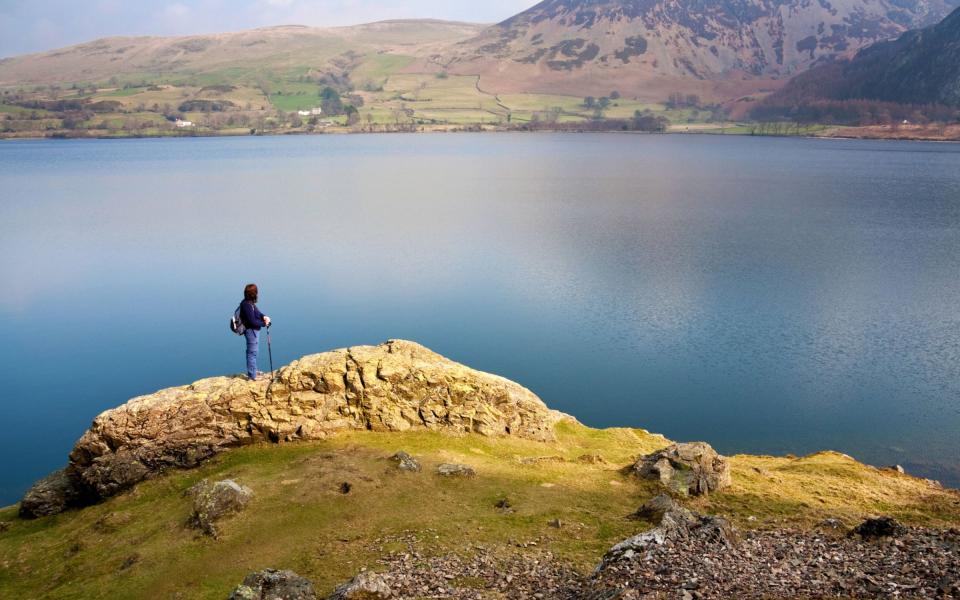
Not all those who wander are lost, but I was. I was navigating the western ascent of Kidsty Pike, a windblown fell in the eastern reaches of the Lake District, when a thick duvet of white cloud rolled in, smothering first the distant views over Ullswater to the west, and then the drystone wall in front of me, spilling over the steep ridge like dry ice over the lip of a beaker. I wandered lonely in the cloud until a cry of salvation came through the soup, directing me back to the path – a pair of American tourists, up ahead of me on the trail for most of the day, who had turned around to notice I had vanished.
Getting lost on the Coast to Coast Path is a venerable tradition stretching back half a century, since the legendary fellwalker Alfred Wainwright created the trail in his 1973 book A Coast to Coast Walk. Since then, thousands of ramblers have made the 190-mile schlep from St Bees in Cumbria to Robin Hood’s Bay in Yorkshire, across the Lake District, Yorkshire Dales and North York Moors.
Going off-course is likely to become a thing of the past soon, however, once the path becomes a fully fledged (and signposted) UK National Trail – a process which was set in motion in August 2022 and is slated for completion by October 2025. In the meantime, I was walking the Coast to Coast in its entirety, to find out what had changed and what had stayed the same in the 50 years since Wainwright minted the trail.
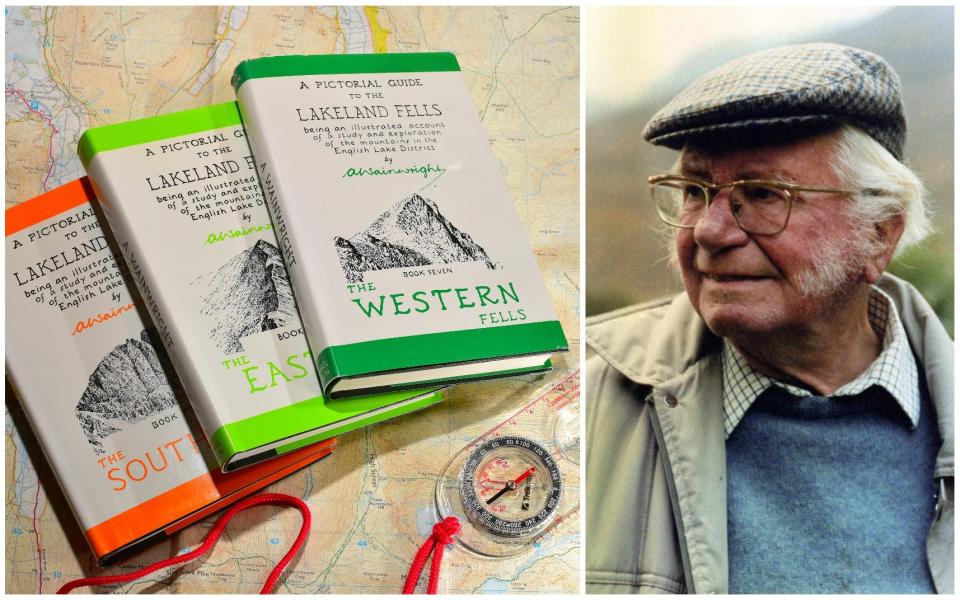
My journey had begun a week before my wayward wanderings on Kidsty Pike, at the western trailhead: the Cumbrian coastal village of St Bees. The sky was a deep blue veined with white, like sodalite. Crackling gorse filled the air with the scent of coconut, and bluebells flowered right to the cliff edge, which plummeted sharply to a green sea and the pink rock of Fleswick Bay.
I followed Wainwright’s directions closely, noting sadly that the former miners’ cottages of the down-at-heel village of Cleator still matched his grim description – “cheerless monuments to a brief prosperity that withered and died” – and following his advice for crossing a barbed wire fence by placing my jacket over the spikes. “Better a torn garment than impaled testicles or what have you,” he sagely observed, and it’s hard to disagree.
I entered the western reaches of the Lake District on descending a hill into the pleasingly named Nannycatch Beck – still an “Arcadia-in-miniature beneath the cliffs of Raven Crag”, just as Wainwright described it. I sat to rest beneath a birch tree, watching peacock butterflies flutter their eyespots amid stands of moor-grass, and tucked into the cheese and pickle sandwiches packed for me that morning at Stonehouse Farm, my B&B in St Bees. “If it wasn’t for Wainwright, we wouldn’t be here,” proprietor Tony Beattie had told me as he prepared my lunch. “My mother-in-law set up this hotel 30 years ago, and the Coast to Coast has become so popular since then. We owe everything to it.”
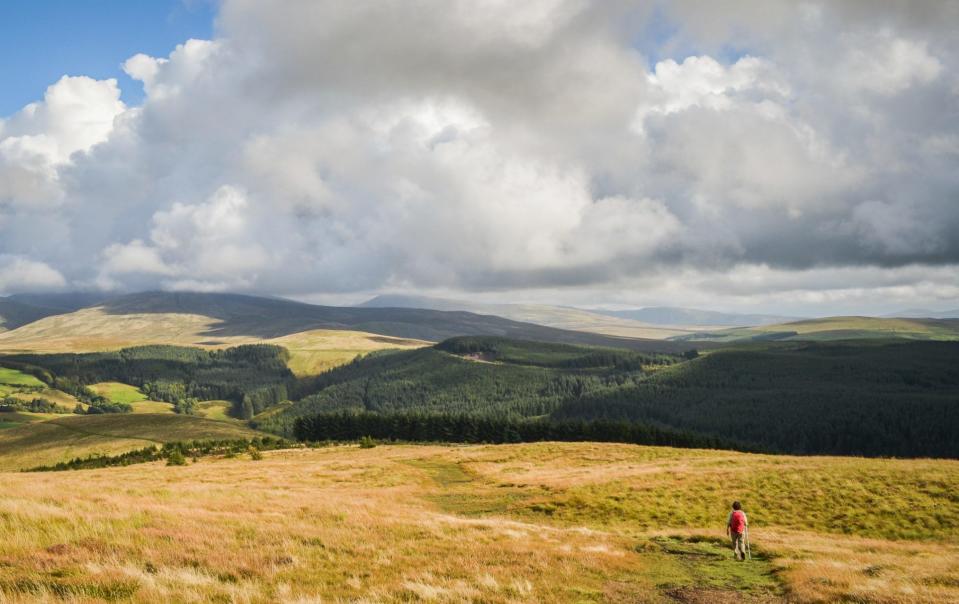
Wainwright is a legend around these parts; it’s a rare pub between Rosthwaite and Richmond which doesn’t serve his namesake ale, Wainwright Gold. He was an eccentric sort, famously antisocial towards other walkers, and writing that he took his walks wearing his “third-best tweed suit”. By the time he published A Coast to Coast Walk in 1973, he had already achieved fame for his series of guidebooks to the Lake District, each painstakingly handwritten and accompanied by wry observations and hand-drawn maps.
His description of Ennerdale Water as “remote from the usual haunts of Lakeland’s visitors” still holds true. I didn’t see another soul all the next morning as I scrambled along its southern shore; all was still but for a diamond sprinkling of sunlight dancing on the lake’s surface, and everything in sight – clouds, rocks, trees, hills – was reflected as a strange, blurry mirror-world.
Beyond the water lay Ennerdale Forest, a dark mass of non-native spruce and larch planted from the 1920-50s by the Forestry Commission, much to Wainwright’s disgust. A lover of the windswept hills, he appears to have harboured something of a prejudice against trees in general; in A Coast to Coast Walk he makes rather catty comments about a view being “attractive in spite of its dark forests of conifers”, and prefers at every turn “fellsides open to the sky, singing birds and grazing sheep”.
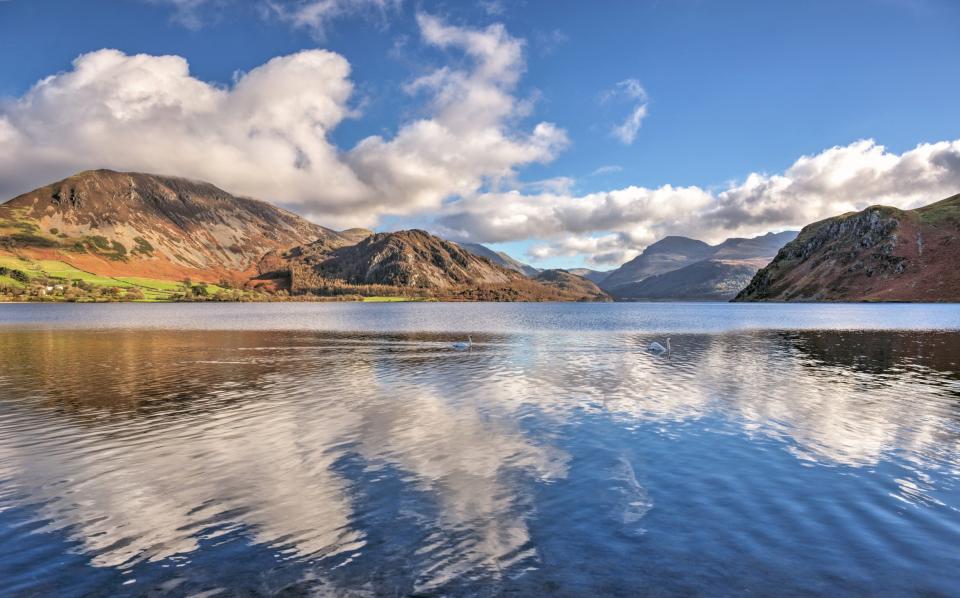
What Wainwright failed to acknowledge is that those barren hills are the topographical equivalent of a plucked chicken – once covered in native woodland, his beloved grazing sheep have now nibbled them down to barren scrub, representing a disastrous decimation of habitat and biodiversity.
In Ennerdale, the authorities are taking steps to repopulate the corridors of imported conifers with native trees, and the forest is becoming a haven for endangered wildlife. I spotted marsh fritillary butterflies flitting orange and white through the ferns, and managed to photograph a red squirrel scampering up a tree trunk; there are also plans to reintroduce pine martens in the future. The forest has taken on the feeling of an abandoned human place, like an amusement park left to overgrow. Once arrow-straight, the conifers are becoming gnarled and crooked, bearded with mosses and lichens; sap spills from gashes in their trunks like oil from a breached hull.
Before long, civilisation began to reveal itself. I stopped for a coffee at the YHA Black Sail, still “the loneliest and most romantic of youth hostels,” in Wainwright’s words, which has been sheltering weary wayfarers since 1933. Then came Grasmere, where I joined the throngs of tourists poking around Dove Cottage, erstwhile home of William Wordsworth and his housemate from hell, Samuel Taylor Coleridge, who would wake screaming from opiate nightmares and demand boiled eggs seasoned with cayenne pepper.
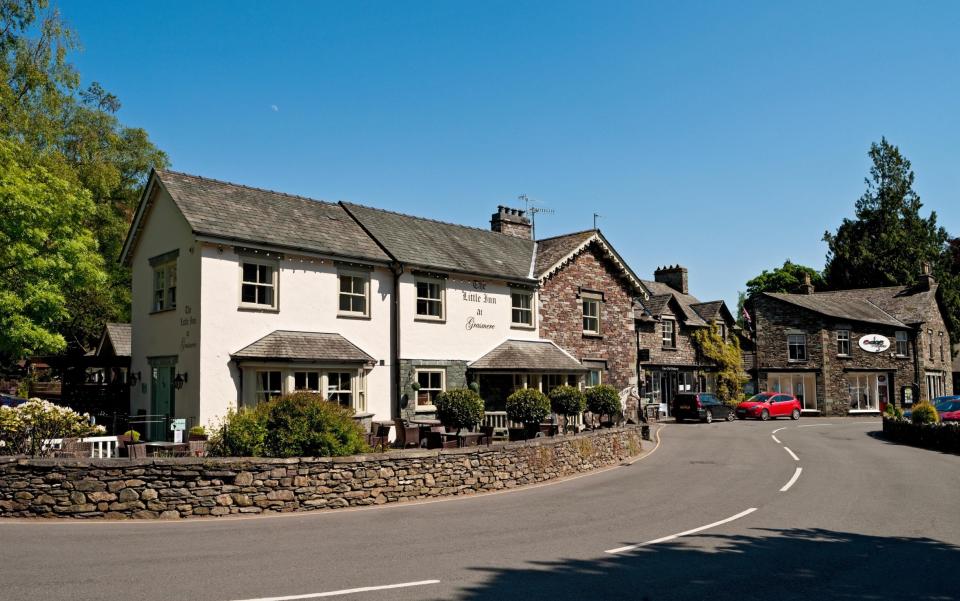
Wainwright’s book does not devote much space to human culture, however – he tended to see humanity in general as an inconvenience – so soon I was back out into the hills, leaving the Lakes behind for the Yorkshire Dales. I was met in the village of Reeth by Craig Ralston, Senior National Nature Reserve Manager at Natural England, who walked with me for an hour to discuss conservation challenges along the Coast to Coast Path.
“In Wainwright’s day, this verge would’ve been covered in wildflowers,” he said, indicating a roadside strip of neatly shorn grass. “Because of health and safety, and our modern fixation on tidiness, they are mown nowadays – it’s all habitat loss. You hear a lot less cuckoos today than 50 years ago, and plants like Yorkshire sandwort are getting squeezed by climate change.”
“On the other hand, we’ve worked with Kew Gardens to repopulate the lady’s slipper orchid, which only grows here in the Yorkshire Dales. We’re also seeing a lot more buzzards, red kites, little egrets, and butterfly moths than Wainwright would have seen.”
“Ultimately, we are just another species. Yes, we have a much greater impact than most – but we are also the only ones able to recognise that, and to do something about it.”
In this regard, Craig believes that the creation of the new National Trail will help, by attracting more people to the outdoors. “There’s a trade-off, of course – more visitors means more disturbance to the environment. But if people don’t get out into nature, they’re never going to care enough about it to do anything to preserve it.”
Becoming a National Trail should make the Coast to Coast more accessible to greater numbers, even if it loses some of its choose-your-own-adventure appeal. I met many walkers along the way, some from as far afield as the USA and Australia, whose only complaint was that the walk was not well signposted enough. In places, in fact, it isn’t waymarked at all, and in others, the path degenerates into a boggy morass which must be navigated, hopscotch-style, by a series of carefully landed leaps.
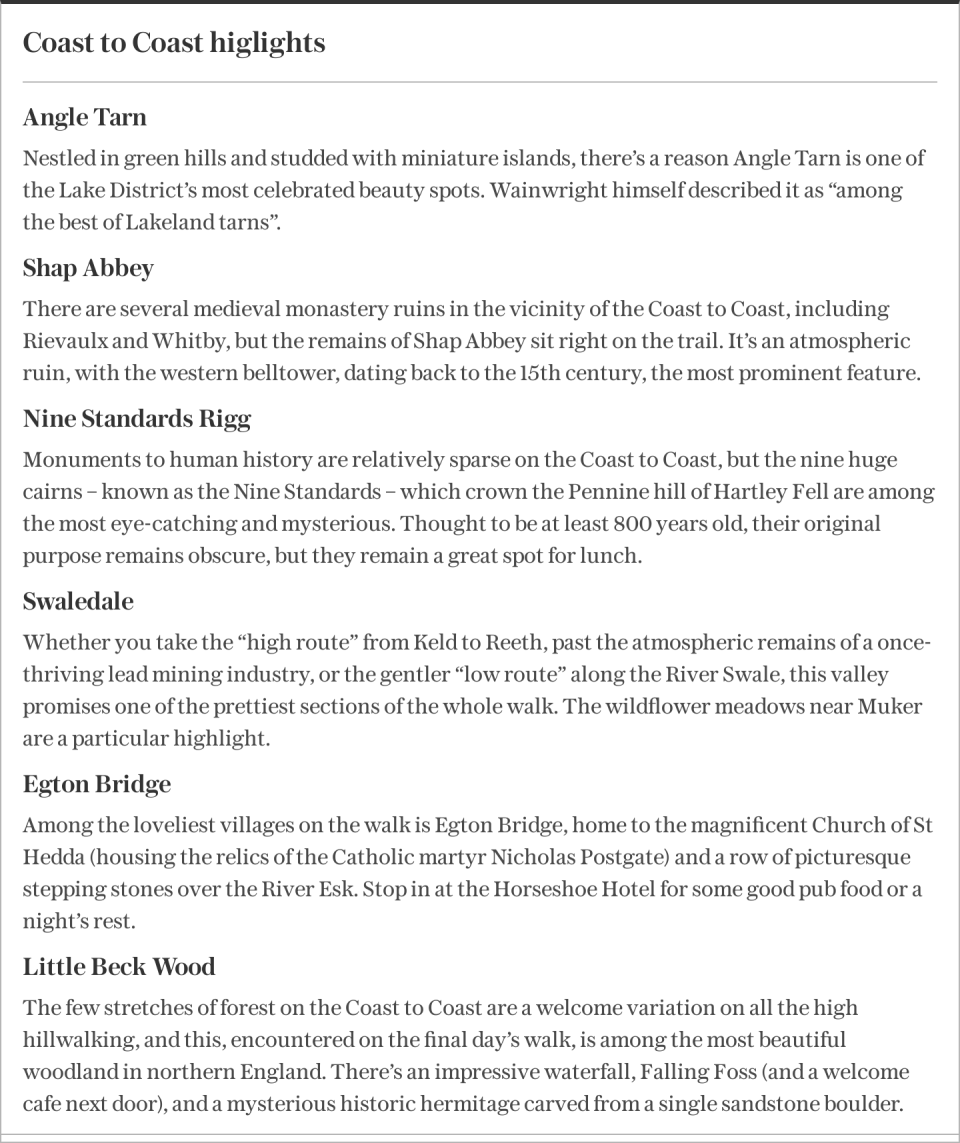
On my final day’s walk, a trying 20-miler over the moors from Glaisdale to Robin Hood’s Bay, I was joined by National Trails Senior Adviser, Bruce Cutts, who explained how the path was being improved. “We’ll be laying flagstones over the boggiest bits on the moors, and signposting the path clearly,” he said. “We’re not removing the option to choose your own way, though – there will be braided routes giving you the option between high and low paths, for example, just like Wainwright suggested in his book.”
We picked a route carefully across the boggy moor of Graystone Hills, as the skeletal ruin of Whitby Abbey revealed itself in the distance, and beyond that, the North Sea. We emerged from the moor and met a main road, where Bruce said goodbye. Soon afterwards, I reached a junction with a road sign signalling 2.5 miles to Robin Hood’s Bay – straight as a die, downhill on tarmac all the way. I withered somewhat as I consulted my map and realised that Wainwright, in typical style, had forgone this direct route to the finish line in favour of one final exhausting, undulating clifftop push around a craggy, hilly headland.
I was tempted, I will not lie, to follow that straight road, to the promise of scampi and chips, a cold pint and a warm bed. But I resisted, keeping to Wainwright’s suggested route, propelled by the quote which adorns a tiled mural to the great man in his native Blackburn, and which could be said to be a hillwalkers’ credo: “You were made to rise and soar, to crash to earth, then to rise and soar again.”
Essentials
Daniel Stables was a guest of Macs Adventure (macsadventure.com), which offers self-guided Coast to Coast itineraries, including accommodation and luggage transfer, from £1,315pp (14 days). Shorter options are also available.
The Inn at Grasmere (theinnatgrasmere.co.uk) is a historic coaching inn in the heart of Grasmere, with comfortable country-style rooms, a large bar and conservatory restaurant, and swimming pool.
Kirkby Stephen is often described as the spiritual heart of the Coast to Coast, and the gorgeous, ivy-smothered Fletcher House (fletcherhouse.co.uk), a Grade II-listed Georgian building, is one of the best places to stay.

 Yahoo Sports
Yahoo Sports 